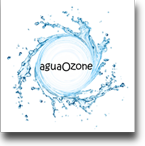Is Water the New Gold?
Going into the 21st Century this is a question that has been posed by some in the global investment community. Perhaps more a rhetorical question, though an issue in our future that is imminent and we would do ourselves well by addressing sooner than later.
The OECD (Organization for Economic Co-operation and Development) Water Outlook (May 21, 2012) projects water demand to increase 55% globally between 2000 and 2050 – global population expansion from 7 billion today to 10 billion (42.9% growth!) by 2050 is the driving force. Currently agriculture (71%) and industry (16%) account for 87% of the demand; individuals consume the balance. .
Aside from the overall global supply / demand conundrum, as consumers we need to be concerned with the dwindling 13% of supply available for consumption. What is the “tax” to our environment to achieve equitable access to our basic staple of life, and what is the product quality of these sources – how safe are they to drink? [to be addressed in a future rambling]
We should first understand what exactly is the water industry? Unlike oil, water isn't mainly about finding new supplies. But it is about infrastructure. The object is purifying the huge quantities collected from wells, rivers, and rain, and distributing it, with total reliability, to absolutely everyone. That epic job doesn't stop with drinking water. It also encompasses treating "wastewater," or sewage, an area that's just as big and just as complex. Doing it right requires keeping a huge, modern, multibillion-dollar network of pipes and pumps and plants in excellent shape and operating the sprawling network efficiently.
An arduous path to market indeed, to say the least – and one where the quality controls pass through multiple capable hands and regulations; we hope.
“Water is your body’s principal chemical component and makes up about 60 percent of your body weight…you must replenish its water supply by consuming beverages and foods that contain water… roughly 2.2 liters to 3 liters daily (women, men, respectively…"- Nutrition and Healthy Eating – Mayo Clinic website, Oct. 12, 2011
From a direct consumption perspective we generally have two options; 1) tap water sources depending on the efficacy of municipal treatment, handling and distribution and 2) bottled sources, in many cases the repackage of municipal waters, but in all cases, at multiples the cost of tap water.
Let’s now take a look at the energy impact of bottling water. A peer-reviewed publication (Energy Implications of Bottled Water – P.H. Gleick, H.S. Cooley; "Environmental Research Letters (2009) vol. 4)" takes an in depth look at the costs to produce bottled water. Not a trivial task to quantify given the various process and distribution options, but this publication is an easy-to-read-and-digest source for those of you so inclined to do so. The cost basis is local production and distribution in the Los Angeles area.
The essence is that a large majority (71%) of the energy consumed in the production and distribution of bottled water is the (PET plastic) bottle; manufacture of the PET preform and blow molding to the final fillable bottle single serve sizes.
The next largest component of energy consumption in the process is transportation costs, average 25%. This percentage would be significantly increased when the finished product is shipped from an international origination (57% of total energy consumption in the example of Evian shipped from Le Harve, France). The energy requirements for any treatment (filtration, UV / Ozone treatment, reverse osmosis, etc.), bottle filling and packaging, plus refrigeration at Point of Purchase are relatively small – less than 5%.
Put in energy terms, in 2007 (at the time of writing this was the last year global data was available) 200 billion liters of bottled water were sold globally – the U.S. accounted for just over 33 billion. The paper estimates the energy cost for just the United States, between 32 and 54 million barrels of oil – roughly three times this amount on a global scale.
On a total energy consumption basis this is relatively small for what is consumed annually in the U.S., however, at the estimated 5.6 to 10.2 MJ l-1 - Mega Joules per liter – energy consumed for bottled water, this is up to 2000 times the energy cost to produce tap water. Now we are informed.
In this part of our website we intend to cover the various aspects of the bottled water industry that have an impact / pertinence on our environment (positive or negative). We invite your comments, questions or suggestions (please visit our Contact page).

